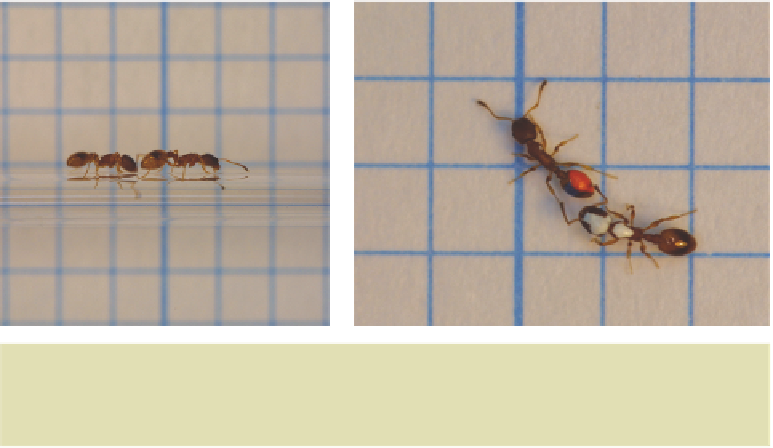Biology Reference
In-Depth Information
(a)
(b)
Fig. 3.13
(a) (b) Tandem running in the ant,
Temnothorax albipennis
. The leader
teaches the follower where to go to find food. (Franks and Richardson, 2006).
Photos © Tom Richardson.
The leader pays a cost when it is followed,
travelling much more slowly because of
regular stops to make sure the follower is
still in tow, and to give the follower time to
learn landmarks, which the follower itself
will use to find its way back to the nest.
When the gap between leader and follower
grows too large, the leader slows down
and the follower accelerates. Finally,
followers find food more quickly when
tandem running than when searching
alone. These results show that the leader's
behaviour fulfils all the criteria for
teaching, with the follower acting as
pupil. The lessons learned by followers are
passed on when they become leaders, so
although tandem runs are slow they
propagate time-saving knowledge among
the foragers in a colony.
Alex Thornton and Katherine
McAuliffe (2006) discovered teaching in
meerkats,
Suricata suricatta
, which live
in a harsh desert environment where
they have to dig for prey (invertebrates,
lizards). Among their favourite prey
items are scorpions, which have deadly
neurotoxins and powerful pincers
(Fig. 3.14). Adult meerkats actively
Teaching in ants
and meerkats
Fig. 3.14
A meerkat pup with a
scorpion. Adults teach the pups handling
skills for these dangerous prey. (Thornton
& McAuliffe, 2006). Photo © Sophie
Lanfear.






























